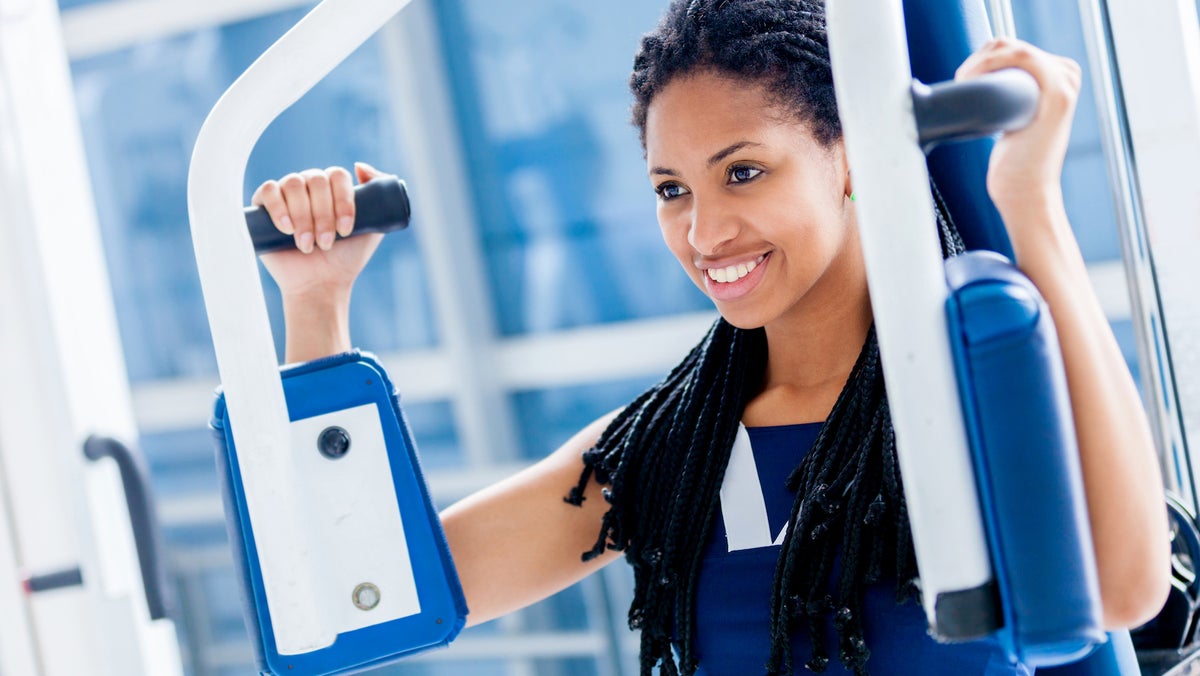Products You May Like
Get full access to Outside Learn, our online education hub featuring in-depth fitness, nutrition, and adventure courses and more than 2,000 instructional videos when you sign up for Outside+
Sign up for Outside+ today.
With so many machines or possible exercises available in the gym, it can be hard to know exactly what to train before a big hike. You should focus on the machines that target the glutes and quads, right? Well, it’s not so simple. Many gym machines work to isolate muscles, which can be great in a rehabilitation setting, but you can waste your time prioritizing them because those movements aren’t replicated on the trails.
No good or bad exercise
Before we begin, it’s important to acknowledge that there are no right or wrong exercises, but choosing the most efficient exercise for your goals is very important. For those with less training experience, free weights could be intimidating or provoke gym anxiety. Also, machines are less complex, thus more accessible for fitness beginners. In this case, it would be wise to hire a trainer to supervise and help your exercise form (bonus if your trainer has hiking or backpacking experience).

Avoid: Hip Abduction & Adduction Machine
This machine isolates the muscles in the groin and outer hip, which is ideal for recuperating from a strain in the area. Performed sitting down, the action begins by pressing your knees outward (abduction) and squeezing your legs together (adduction). However, this motion doesn’t mimic everyday actions we perform and, as a result, won’t carry over well into the needs of a hiker.
Do: Lunge variations
Better options include lunge variations, lateral step-ups, or Copenhagen plank progressions. These movements will strengthen critical hiking muscles and make the most of valuable training time.

Avoid: Bicep Curls
This classic exercise isn’t going to serve hikers very well. Lifting a backpack to put it on is similar to a bicep curl, but that’s a tiny action taken only a couple times throughout the day.
Do: Bicep curls with an overhead press
It’s better to target back and shoulder muscles by doing bicep curls with an overhead press. This exercise will incorporate a functional movement that activates more muscles and joints used in hiking. In addition, it will make your shoulders stronger, which will help you carry a heavier backpack.

Avoid: Pec Machine
The pec machine is excellent at isolating the pectoralis muscles on the chest. Performed while sitting, your elbows are bent at 90 degrees as your arms raise out to the side and squeeze together at shoulder height. However, isolating these muscles doesn’t offer much value for hikers. You’ll get the most bang for your buck with a push-up.
Do: Push-ups
Push-ups will strengthen the arms, chest, shoulders, and core and back muscles. Movement variations such as incline, knee, and eccentric push-ups are also great alternatives and offer strength benefits at any fitness level.

Avoid: Knee Extension Machine
This machine is super popular in gyms because it’s excellent at isolating the quadriceps muscles. It sounds great for hikers, right? It can be, but there are better options if you want to scale mountains stronger and faster. The knee extension machine generates force by moving the foot through open space as you raise your leg against resistance.
This action where the foot moves through space is known as an open kinetic chain movement. That’s not the most effective motion for hikers. Think about it: Hikers are always planting their feet on the ground—never swinging their legs in the air against resistance. A closed kinetic chain movement, one where the foot is pressing against the ground, will offer more benefit.
Do: Step-ups
When the foot is on an object, such as a box for step-ups, the exercise will better mimic hiking, making it an ideal choice compared to the knee extension machine. In this case, beneficial exercises include step-ups, the Bulgarian split squat, or lunge or squat variations.
Lee Welton is a physical therapist assistant and personal trainer in Southeast Idaho. He thru-hiked the Pacific Crest Trail in 2018 and has trekked through the Dolomites in Italy. He can typically be found hiking and exploring the trails in Idaho and Wyoming. For more information, videos, and resources from Welton, visit trailsidefitness.com.
